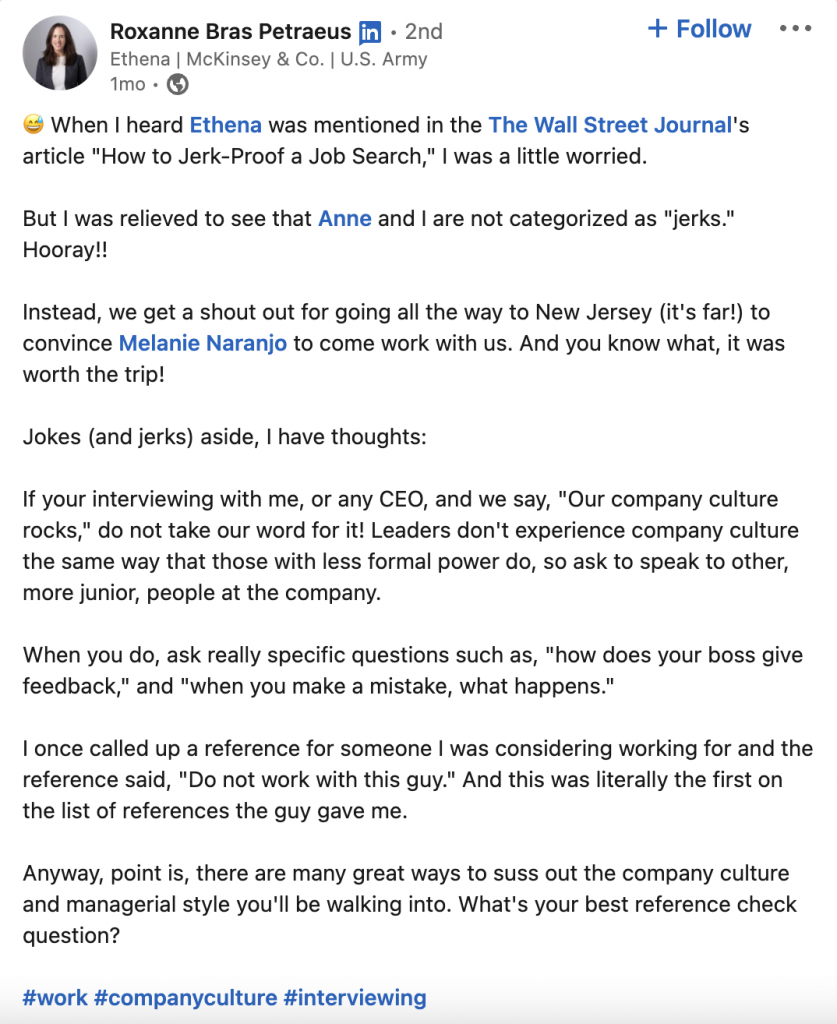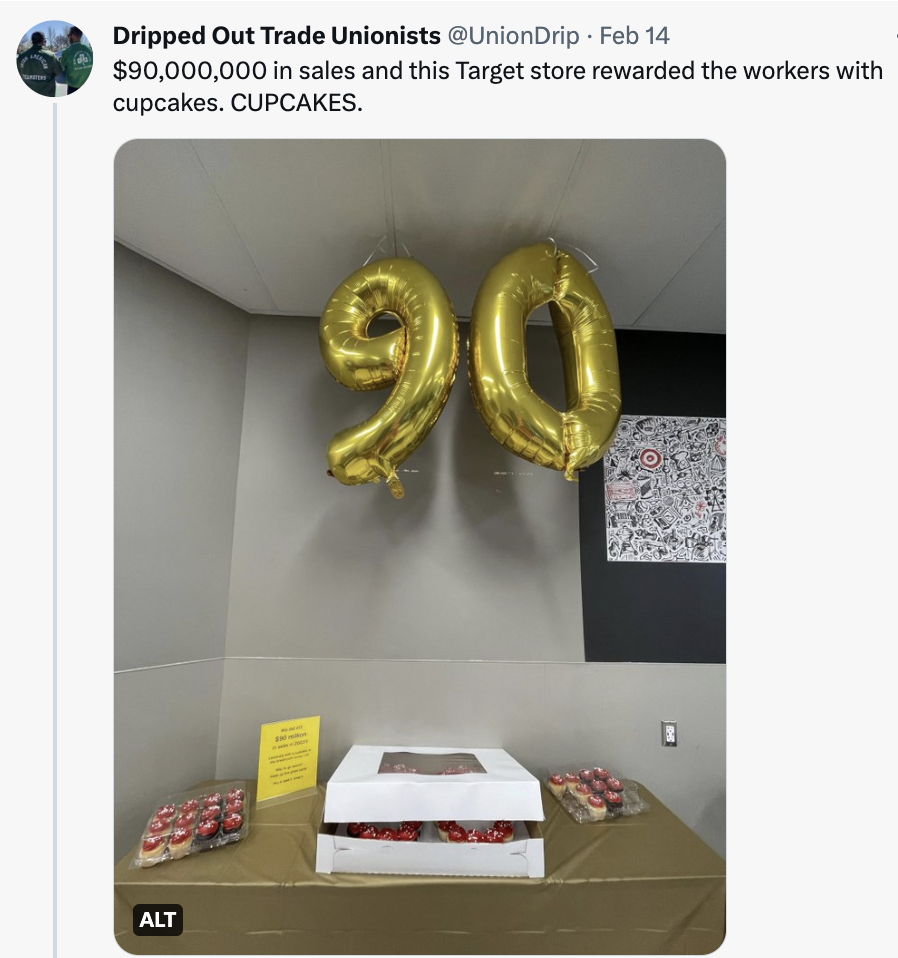
13th April 2023
Guest Post: 3 HR leaders share tips to reduce regrettable employee turnover

Nothing stings quite like regret. In the aftermath of an undesirable outcome, it’s tough knowing you could’ve done something to prevent it. Maybe that’s why regrettable employee turnover (which is when a valued employee leaves your company over an issue that could’ve been fixed) rattles HR leaders so badly.
The pain of that type of loss is quantifiable: According to Gallup, replacing one employee costs anywhere from one-half to two times their annual salary. And every year, U.S. businesses lose a trillion dollars to voluntary turnover, which Gallup calls a “fixable problem.”
But pulling the old counter offer move just won’t cut it these days. By the time a top performer has turned in their resignation, they’ve already reached their wit’s end, and in a candidate-driven market, they’ve got options elsewhere. At that point, upping their pay without fixing the root of the problem is simply too little too late.
That’s why building a culture of employee appreciation, one where your workers are consistently rewarded for their efforts and feel valued for who they are, is the key to reducing regrettable turnover. Instead of reactionary quick fixes, employee appreciation provides a long-term, proactive solution to this painful problem.
Blueboard recently participated in a webinar with 15Five and ThinkHuman on ways to fix regrettable turnover, where I and two other HR experts shared personal experiences and proven tips. Instead of focusing on what you could’ve done in the past to prevent a top performer leaving, here are some actionable tips from our conversation to try going forward to reduce regrettable turnover.
Strategies from people leaders at 15Five, ThinkHuman, and Blueboard to address attrition and improve employee retention.
During our conversation, a central theme emerged: What today’s workforce craves is a human-centered approach that permeates organizations. From onboarding new hires to re-engaging long-tenured employees to cultivating a culture of appreciation, HR and people teams are looking for new ways to center the workplace experience in everything they do.
To speak to these themes, Tiona Nicholas, Senior People Operations Specialist at ThinkHuman, highlighted three lessons HR leaders can take to heart and take action on.
Cultivating employee-centric people leaders: 3 insights from Tiona Nicholas, Senior People Operations Specialist, ThinkHuman.
1. Organizations need to be people-centric.
“If an organization isn’t offering what the employee wants or needs,” says Tiona, “they’re going to go find an organization that will.” She points to the many companies that went remote in 2020 and then tried to get employees back into the office later in the pandemic. By that point, enamored with the perks and flexibility offered by hybrid remote work and working from home, many employees simply went in search of jobs at remote-first organizations.
How to take action: Implement the findings of your employee engagement surveys.
Not sure what your workforce wants or needs? Ask. Through employee engagement surveys, you can take the pulse of your workforce. But don’t just stop there.
“Taking action on what was said in the surveys is huge in an organization,” Tiona reminds us. “We cannot just collect all of that data and then do nothing with it.”
She encourages employers to share those results (good and bad!) with the organization and take action on what was said. By doing so, you’ll show your employees that they can trust you to do what you’ve promised.
2. Employees have options beyond quitting.
It’s up to organizations to introduce alternatives to leaving, such as moving an employee to a different role or reporting to a different manager to help them thrive.
How to take action: Host effective one-on-ones.
Employee engagement surveys are good, but Tiona urges HR professionals to harness the power of effective one-on-ones. This is where the magic happens. Managers can truly connect on a human level with their direct reports by asking them how they’re doing and inquiring about how to better support them. As Tiona puts it: “These are the conversations that add up.”
In these discussions, a manager can better detect disengagement in an employee—and step in with options beyond the employee leaving the org entirely. It’s a nurturing and preventative approach, as opposed to the reactionary one of only doing something once an employee puts in their notice.
3. Onboarding plays a pivotal role in employee retention.
First impressions matter, and onboarding is no exception. Research by BambooHR found that providing a positive onboarding experience can triple the chances that a new hire will feel strongly committed to your organization. So if you, like many employers, find that new employees are leaving within the first few months, it’s time to reassess the way you introduce them to teams and train them within your company.
McKinsey & Company identifies five emerging HR operating models that companies are adopting in response to growing volatility (such as hybrid work and majority-millennial workforces). One of the models seeks to create a world-class employee experience—starting with the onboarding phase of the hiring process.
How to take action: Review and revamp your onboarding.
Not sure where to start? Tiona has a few suggestions:
- Put yourself in the new hire’s shoes. Imagine you’re the person who just signed the offer letter. What do they need next? What kind of paperwork will they need to fill out? How can you best tailor orientation for that role? How will you prepare leaders to welcome the new hire?
- Experiment! Tiona says not to be afraid to try new things; sometimes the best way to learn is through trial and error. Get creative, and have fun with it. At one organization she worked with, HR decided to host Lunch & Learn with the CEO where new hires got 30 mins to meet the CEO and ask her any questions that they wanted.
- After 30 days, send them a survey. Ask for new hire feedback in a survey after their first month is over. That way, you can continue to improve upon the onboarding experience based on what new hires are saying, not just by using guesswork.
Appreciation as a remedy to employee attrition: 3 insights from Cassandra Lowery, Employee Engagement Consultant, 15Five.
Continuing the theme of appreciation, Cassandra’s passion for improving the employee experience really shined through as she shared personal stories about undervalued employees and how people leaders can help workers find their spark again.
1. Workers don’t want to merely survive—they want to thrive.
Since the pandemic, there has been a shift in focus from just trying to get by to cultivating a work environment where people can truly thrive. In particular, employees are searching for meaning in their jobs—and feeling appreciated is a key indicator of both engagement and whether or not they feel secure in their role. In her work as an employee engagement consultant, Cassandra says that 80-90% of the time, meaning at work is cited as the most influential aspect of employee engagement.
How to take action: Help longer-tenured employees see how they can still make an impact at work.
We talked about the importance of onboarding in the previous section, but it’s not only the new hires that need TLC! Your longer-tenured employees may be overlooked because it can seem like, since they’ve been at your organization for a while, they’ve got it all figured out. But in reality, they’re the ones wondering how they can still make an impact—especially as your company evolves.
Consistently help these folks with role clarity, and take the opportunity to “re-recruit” them by reminding them that they and their commitment to the organization are valued. Update targets and objectives, host one-on-ones, and check in with them regularly about career growth and development opportunities. Cassandra says that, ultimately, you need to communicate with longer-tenured employees just as much as with new hires.
2. Your top performers need more support and appreciation.
At one organization, Cassandra recalls a high-performing employee who was given more and more responsibilities until, one day, she quit.
“A lot of leadership were shocked because she was that person that just was always promoting the company, the go-to person.”
What happened? As responsibilities piled up, the resources, support, and appreciation didn’t match up. In the end, this employee burned out and felt that leaving the company was her only option.
“You need to have processes in place to keep a pulse on employees,” says Cassandra. Activities like manager check-ins to chat about aspects of an employee’s life, like work schedules, and employee surveys that address essential topics like work-life balance are a great place to start. With that kind of data, leadership and HR can see how teams are doing in a measurable way, and take a proactive step towards reducing their employee turnover rate.
How to take action: Use confidential engagement surveys, and train leadership on how to use the data.
Employees can be hesitant to be honest in engagement surveys out of concern for retaliation. Cassandra suggests two ways to ease their fears:
- Use confidential surveys. Depending on the size of your organization, it might be fairly easy for managers to guess who submitted certain responses. Though that should never be a manager’s goal, there are ways to safeguard against this. For example, 15Five software has something called a “rule of five.” If a specific team or segment of data has fewer than five people in it, those responses will be hidden to protect those respondents’ confidentiality.
- Train managers on how to use that data. Employee survey data should be used for benchmarking—not for trying to guess who said what. To get the best use of the surveys and be fair to your employees, train your managers and anyone else authorized to view the data on how to approach it. Frame it as an opportunity to see how they can improve as a team, not as an attempt to identify individuals. Let respondents know about this as well, and encourage them to give honest answers so you can act on the data and ensure they’re getting the support they need.
3. Going quiet can be a strong indicator of disengagement or burnout.
Are your typically passionate employees suddenly quieter than usual? That might be a sign that they’re checking out or drowning in their workload.
How to take action: Invest in manager training so leaders know how to spot disengagement.
Gallup research found that managers make up at least 70% of the variance in engagement, meaning your managers have incredible influence over whether an employee is fired up about their work or mentally checking out of it.
It’s no wonder manager effectiveness is the top priority in 2023 for 60% of HR leaders, according to Gartner. Having effective, human-centric leaders who have the emotional intelligence to spot a disengaged employee doesn’t happen by accident. Investments in manager training and L&D is one of the top HR trends that we’ve identified for 2023.
Recognition leads to employee retention: 3 insights from me, Shireen El-Maissi, Manager of People and Talent, Blueboard.
The insights Tiona and Cassandra shared definitely align with what I’ve witnessed throughout my HR career, and in my eight years specializing in talent acquisition specifically. To build on their points, I wanted to emphasize the importance of recognition and give concrete examples of how Blueboard practices what we preach with our own employees.
1. New hires want to see a path for career growth within your company.
Much of what I know about regrettable turnover comes from my experience hiring for Account Executives at a previous organization. We’d be so excited to get them onboard and had a great training program in place, but in the end, these AEs would leave within a year of joining the team. This happened repeatedly over the course of two to three years. It was expensive and time-consuming, not to mention a poor experience for our clients who had to be introduced to a new AE every few months.
After reviewing our processes, we saw what was happening: Our best AEs were the ones who were promoted from sales development roles. Not only were they the longest tenured employees in the sales department—they were also the longest-tenured employees in the entire company.
Our solution was to build out career and growth paths for our sales development team, hire talent on the brink of becoming an AE, and then after training them for six months in the sales dev role, give them a chance to get promoted into the AE spot.
How to take action: Build career development paths for the role that isn’t sticking.
If you’re seeing high attrition in a specific department, consider promoting from within. They’re already a proven culture add, they know the culture and product well, and hiring from within shows your employees that you value them and that their work will be rewarded. On top of that, create growth paths in collaboration with employees that give them a clear vision for how they can be successful on their own terms and advance within your company.
2. Disengagement immediately after accepting an offer is an early warning sign of regrettable turnover.
The offer stage is my favorite part of my job. The excitement is unbeatable. We’ve spent all this time getting to know each other, mutually decided it’s a good fit, and the new hire is eager to get started. How long that excitement lasts after they’ve accepted the offer is a telling sign of how engaged they are.
What are some signs they’re engaged early on? They’ll have their cameras on during virtual meetings, ask questions during training, show interest in meeting new people (even outside of their own team), and just want to truly become a part of the company.
If those signs of excitement just aren’t there or start to fade during onboarding, it could mean that your new hire is having some regrets. And that regrettable turnover may be in the near future.
How to take action: Attempt re-engagement.
Before you panic thinking a new hire is about to jump ship, consider the possibility that they’re simply feeling overwhelmed and undersupported. Ask yourself how you and your team are providing tools and encouragement to this new member of your organization. Do you introduce them to teammates? Do you ask them what kind of support they need? How can you help them feel welcomed?
At Blueboard, we give an experiential reward to every new hire during onboarding. It’s a unique way to show them we’re happy they’ve joined our team, a gift that goes beyond the typical desk decoration or welcome lunch. That early boost of delight and connection helps new team members feel engaged.

A photo from my very own onboarding reward after joining Blueboard, during the “Take a Spin at Pottery” experience.
If you’ve assessed the situation and still sense disengagement is at play, here are some ways to re-engage new hires and set all of your employees up for success:
- Acknowledge it. Rather than tip-toeing around the issue, bring it up to the new hire and let them know you’re ready to partner with them to make it work. It can be as casual as saying, “Hey, I sense that maybe your first days here haven’t been what you expected. How can I help?”
- Recognize their hard work. Be specific about the efforts you’ve already noticed them making, and let them know that you’re trying to understand the cause of the disengagement.
- Participate. My personal favorite re-engagement strategy is having leaders jump into the trenches with their employees. For example, here at Blueboard, our VP of Engineering writes code and our COO sends recipient rewards with the team. By being right there with their people, leadership can sense when disengagement is brewing and address it early before it festers.
3. Recognition ultimately leads to retention.
Recognition is so crucial to employee engagement and retention that it deserves its own call-out here. Blueboard teamed up with Wakefield Research to survey 400 U.S. employees about employee appreciation, engagement, and job security. Here are some of the key takeaways from the data:
- Workers who say their company has a strong culture of appreciation are more likely to say that employees at their organization are fully engaged at work.
- 64% of employees who don’t feel completely secure in their job also don’t feel that their company has a strong culture of appreciation.
- Workers who report feeling appreciated often or always are more likely to report that employees at their company are fully engaged.
Based on these findings, it’s safe to say there’s a notable link between how valued employees feel at work and how secure and engaged they feel in their current jobs.
How to take action: Operationalize recognition.
When employee appreciation is built into the way you do business and lead your people, you’ll create a culture that inspires your employees to do their best work and stay loyal to your organization. And yes, while these days almost every business is having to tighten its purse strings, there are still ways to prioritize employee recognition during economic uncertainty:
- Begin with the onboarding process. Create a plan for how you’ll reward and recognize new hires at each milestone (first day, the 30-day mark, at 90 days, etc.).
- Implement a spot reward program, where managers reward direct reports “on the spot” for going the extra mile.
- Create a company values awards program for individuals who emulate those values.
The 6 real reasons employees look for other jobs (and why).
Now that we’ve discussed the ways you can reduce regrettable turnover in your organization, let’s take a few steps back and look at the root causes: What makes employees consider quitting in the first place?
1. Burnout.
Burnout does not come out of nowhere, and it doesn’t happen overnight; it results from chronic stress that goes unresolved. And in 2023, employee burnout is on the rise, making this a top attrition culprit to watch out for.
Right now, people leaders are under unprecedented (and unrelenting) pressure. A Findem study called HR burnout “out of control,” with 61% of HR leaders saying they’ve thought about quitting in the last year. Tasked with being the bearer of bad news during layoffs and challenged to do more with less, it’s no wonder we’re feeling exhausted.
As you work to resolve employee burnout and cultivate resilience in the face of these obstacles, don’t forget to take care of yourself, too.
2. Dissatisfaction with the company culture.
Baking appreciation into your culture will help your people feel seen and valued. Just remember that, because of the power dynamics, how leaders experience company culture is different from how the rest of the company experiences it.
Case in point: In our research on the impact of employee appreciation, 36% of executives reported that their workforce was less than fully engaged, while 57% of non-executives reported the same. Clearly, there’s a disconnect.
How to take action: Cultivate employee connection with mentorship.
Set job candidates up for success by being specific about how you as a leader cultivate a culture of appreciation, and then let them see it for themselves by connecting them with direct reports who can vouch for the veracity of your statements. You can do this whether the person is in the interviewing stage or a veteran employee.
If they’re a job candidate, offer to connect them with an existing employee who can share their personal experience of your company’s culture. If they’re someone who’s been with your organization for years but seems disengaged, pair them with a peer mentor who can help them find fresh, new ways to live out their values in the workplace.

In this LinkedIn post, Ethena CEO Roxanne Bras Petraeus shares why job candidates should connect with current employees to learn more about company culture.
3. Lack of growth opportunities.
According to a Pew Research survey, 63% of workers who quit in 2021 cited “no opportunities for advancement” as a reason. Employees aren’t just after a paycheck; they want to get better both professionally and personally, and they crave being able to see a vision for how that’ll happen in their role. Think of ways you can promote professional development in order to avoid losing top talent to attrition.
4. Ineffective managers.
Analyzing data from more than 13,000 employee ratings of managers, Zenger Folkman found the least effective managers had three to four times as many “quiet quitters” in their direct reports. (For the research, Zenger Folkman defined “quiet quitters” as those who were not willing to put forth extra effort at work.) Conversely, managers who displayed trust-building behaviors, such as having positive relationships with their direct reports, were more likely to manage people who wanted to go the extra mile.
5. Lack of autonomy.
In his book Drive, a New York Times bestseller about motivation, Daniel Pink outlines the three critical elements of true motivation—one of them being autonomy. It is precisely the lack of this element that’s behind the nearly two-thirds of employees surveyed by Monster who said they’d consider quitting if forced to return to the office.
While flexibility has become the latest buzzword, researchers at Jabra say it’s more nuanced than that. It’s not that workers only want flexibility—they want flexibility that comes with autonomy. In other words, it’s not enough for employers to create flexible work models but then call the shots on when employees come into the office and when they work from home. Employees want to be able to choose when they work in-person versus remotely.
6. Feeling unappreciated.
Ever done something nice for someone and feel miffed when they didn’t say thank you? It never feels good. And sure, employees should be receiving adequate compensation for their work, but if you want them to do their best, it takes more than a paycheck. Nearly half of workers in the U.S. have quit a job because they felt unappreciated, according to a OnePoll survey.
But for appreciation to feel genuine, it needs to go beyond the usual gifts (some employees have received a loaf of bread and grocery coupons as tokens of “appreciation” from employers).

This tweet asks if cupcakes are adequate appreciation for employees that contributed to achieving a $90 million sales goal.
To support organizations with showing gratitude to employees, we developed the Blueboard Method: a three-tiered approach to recognition that ensures employers consistently help their people feel valued through meaningful, experiential rewards.
And the research shows it works. An independent analysis found that our clients scored 61% higher than typical companies on the Great Place to Work’s better places to work scale, and 96% of employees reported feeling appreciated for their job after receiving a Blueboard reward.
Regrettable turnover isn’t inevitable (but employees leaving because they’re not appreciated is).
What’s at stake in the race to reduce regrettable turnover? We could throw more numbers at you, such as the Work Institute’s prediction that the voluntary turnover rate could skyrocket to 30% in 2023 or that actively disengaged employees cost the U.S. $450-$500 billion annually. But perhaps being overly fixated on numbers is part of what got us into this conundrum in the first place.
Instead, let’s refocus on the individuals in our organizations. What the HR leaders we met during the webinar pointed to, and what we at Blueboard dedicate our work to cultivating, is that a human-centered approach backed by recognition is the solution to a revolving talent door.
Rather than blaming ourselves for the talent we’ve lost, HR professionals have a chance to embrace this beautiful role we play in building organizational resilience as we weather this storm.
As one webinar attendee, Leo, put it: “Storms don’t last forever. HR can be the rainbows.”

